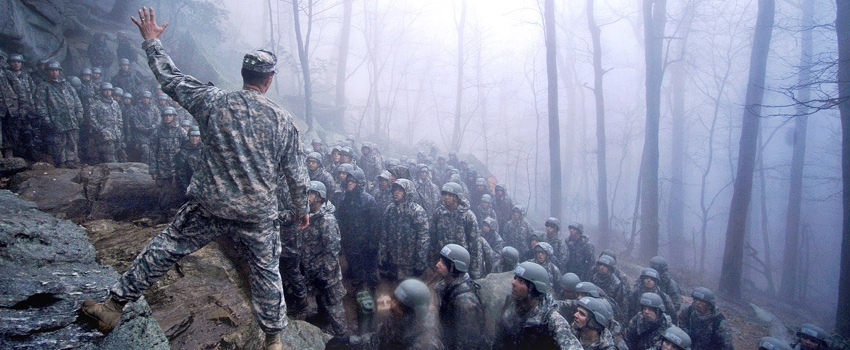
Last week, we stopped our dialogue with a commitment to return to the subject of visualization; specifically as it relates to setting Objectives. Let me start this edition of the Warrior Nation: SITREP with a a quote from one of the greatest success gurus of our time.
Likewise, when we set Objectives, we should start with this same technique. As I coach my clients, I have them work on Objective Setting; specifically around the 4 major areas of their life regarding love, health, wealth, and self-image. This process must include a mental image. Simply put, without a vision, your mind has no place to go.
I’m glad you asked!
Military commanders issue operations orders for every mission that a unit undertakes. Crucial to the initial development of courses of action and the subsequent issuance of these orders to subordinate elements is what the U.S. Army commonly refers to as theCommander’s Intent. The U.S. Army’s Field Manual entitled Operations puts it this way, “The Commander’s Intent is a clear, concise statement of what the force must do and the conditions the force must establish with respect to the enemy, terrain, and civil considerations that represent the desired end state. The commander’s intent succinctly describes what constitutes success in an operation. It includes the operation’s purpose and the conditions that define the end state. It links the mission, concept of operations, and tasks to subordinate units. A clear commander’s intent facilitates a shared understanding and focus on the overall conditions that represent mission accomplishment. During execution, the commander’s intent spurs individual initiative. The Commander’s Intentmust be easy to remember and clearly understood. The shorter the commander’s intent, the better it serves these purposes. Typically, the commander’s intent statement is three to five sentences long.”
Giving units a way to visualize the end state of a mission seems vital to our fighting forces, and providing a common way to visualize success is achieved in this manner. Commander’s Intent provides clarity of purpose when the “fog of war” is present. Put another way, Intent should be the way the battle should end, regardless of what the opposing force puts in your way.
Another tool for issuing orders, prior to military missions, is to brief units with a sand table. The origins of the sand table can be traced to ancient Greece. Here, the sand table, or abax, as it was called, was a table covered with sand commonly used by students to perform studies such as writing, geometry, and calculations. Sand tables have been used for military planning and wargaming for many years as a field expedient model used for small-scale maps and terrain orientation exercises.
If you had the chance to rehearse your most critical actions prior to real-time execution, how many of you reading this post would actually do it; meaning how many of you rehearse your Actions on the Objective? Salespeople; do you practice your delivery to ensure you smoothly articulate key points, while you prepare to handle every conceivable objection? As an accountant, how many of you double check your work prior to submitting your portion of a major customer's tax return? As a project manager, how many times would you verify the time to complete delegated tasks to ensure the toal project completes on time and under budget?
U.S. Army doctrine emphasizes to commanders and staff the need for rehearsals. Good rehearsals are not easy. They require a major work effort with sound preparation, discipline, and involve significant amounts of that precious commodity - leader time. The difficulty involved heightens the need to include rehearsals in all tactical training. The quality of a rehearsal at a training exercise is simply something else for the After Action Review, but the effects of training for and conducting rehearsals during wartime, may mean the difference between victory and failure, between a welcome-home parade, and writing letters home for those soldiers who died."
Only about 5% of the population actually takes the time to write down their Goals and Objectives. Maybe that is why so few people actually are living the life that they would like to be living. Additionally, we know that researchers have demonstrated that memory recall is enhanced with the use of both pictures and words together, as opposed to using words or pictures independently. With that said, if you are going to take the time to write your Objectives down, why wouldn't you do everything in your power to enhance your chances of accomplishing those Objectives by visualizing the actual accomplishment own your own terms, in your own words, with your own vision? If it helps our fighting forces to achieve their Objectives by: visualizing success through creating intentions, creating small scale replicas of their planned successes, and actually practicing how they will accomplish these Absolute Musts of their lives, why wouldn't you do the same for your Objectives?
